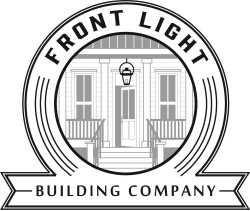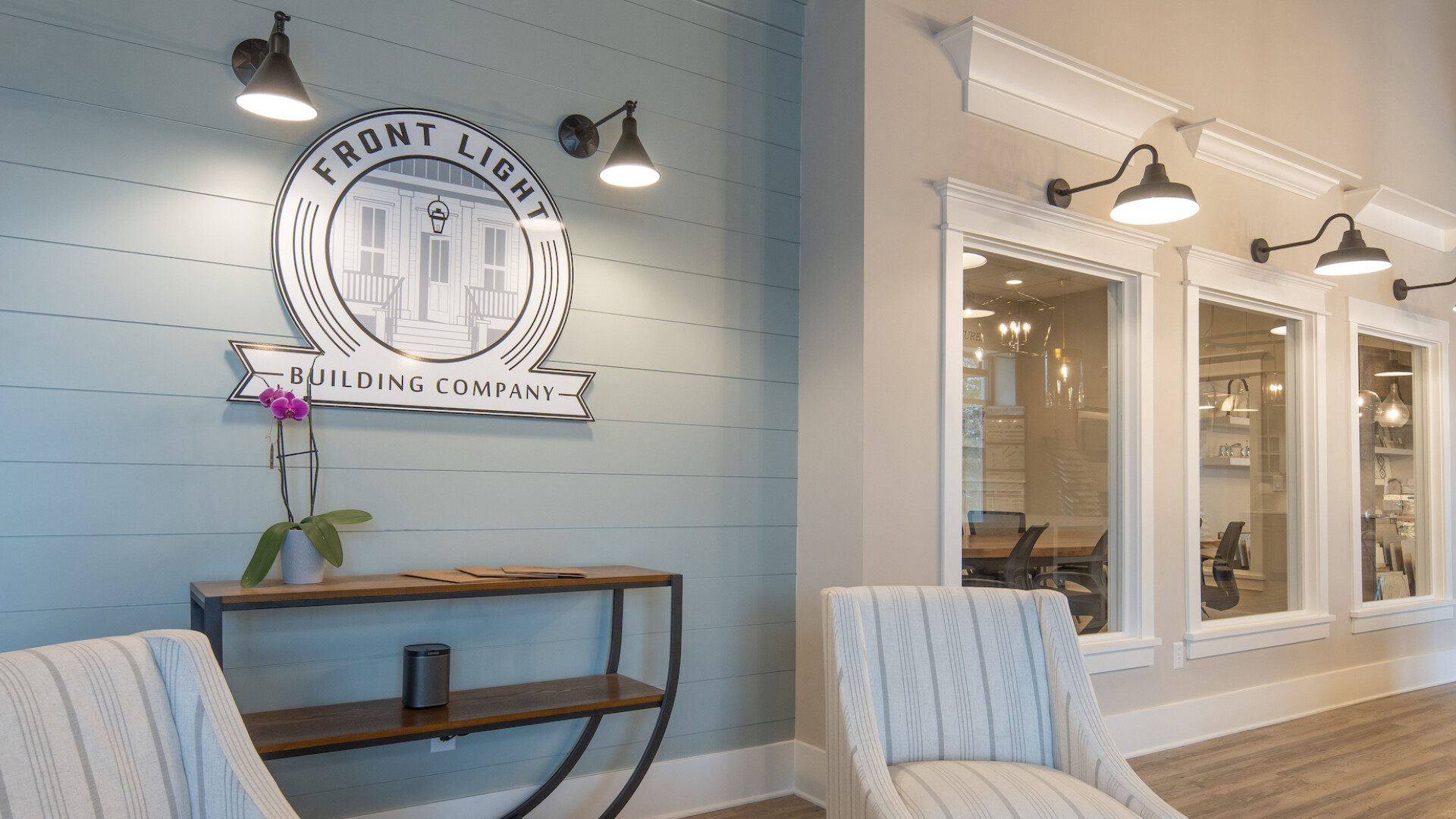Ready to Move? Explore Our Available Homes Below!
Your home awaits you – embrace coastal living at its finest with Front Light Building Company. Our available homes redefine luxury, featuring open floor plans designed for seamless indoor-outdoor living. Elevate your lifestyle in the heart of coastal South Carolina – explore our homes for sale today.

19 Persea Street
Call for Pricing

Carroll
THE CONSTRUCTION LOAN TO PERMANENT LOAN PROCESS EXPLAINED
The process for securing a home construction loan will differ from other types of home loans you may have had in the past.

The construction to permanent loan process is a loan that starts as a loan to build a house. Once the construction is complete and you’re settled in, the loan becomes a traditional mortgage. This is an ideal loan for many homeowners because it’s a one-time close (one set of closing costs), and the interest rate is locked at the start of construction. The bank will fund the builder on a draw schedule, which will line up with county building inspections (foundation, framing, mechanical/electrical, trim, and close).
Most banks offer construction loans in fixed or adjustable-rate options and have pretty flexible down payment options. The loan can include an initial loan payment if you’re purchasing land on which to build, or if you already purchased the lot, the first loan disbursement of the construction loan will be to pay off that loan before construction starts.
How To Finance Your New Construction Home?
The process for securing a home construction loan will differ from other types of home loans you may have had in the past. The first step is to talk to your loan officer. A loan officer should answer your questions about how construction loans are structured, how to get qualified, etc.
The loan officer will ask you about your basic debt, income, and asset information and you will need to have a signed construction or purchase contract with your builder. The contract will detail certain aspects that will impact your loan, such as; Contract amount [which could include construction & cost of land] | Construction start & completion dates.
What Should A New Construction Loan Include?
If you are purchasing the land separately there should be an initial loan payment. If you already hold a loan on the property where you are planning to build, the first disbursement of the construction loan will pay off the land loan before the construction begins. A timetable for the home’s construction period should also be included. This will help determine the number of distributions (or draws) from the loan that will be given to the builder to pay for various milestones during the construction phase.
Draws of the funds are usually at prescribed completion points, requiring that inspectors approve the progress. It should also include how the loan will convert to a mortgage after the construction phase is complete. Some banks offer interest-only payments during the construction phase and a one-time closing at the start of construction.
Flexible down payment options and a locked interest rate at the start of construction. This one-step loan converts to a mortgage once construction is complete. The advantage to this type of loan is that you will only have to pay closing costs one time. Some lenders prefer a less risky, two-step process that requires you to take out an interest-only loan for construction and then refinance into a regular mortgage upon completion. The short-term interest-only loan is usually at a prime plus rate, while the latter options reflect regular mortgage rates.
What Does A Construction Loan Cover?
A construction loan can be used to cover the cost of the land, contractor labor, building materials, permits & more. It’s important to discuss these items with your lender, specifically what will be included in your loan-to-value calculation.
Often, construction loans will include a contingency reserve to cover any unexpected costs that could arise during construction, which also serves as a cushion in case the borrower decides to make any upgrades once the construction begins.
Our Preferred Lenders
Below are some of Front Light’s recommended lenders:
BB&T
Monica Howard,
Email: Mrhoward@bbandt.com
Hae Min Koo,
Email: Hkoo@bbandt.com
TD BANK
Joe Green,
Email: Joseph.Green@TD.com
Ali Mahini,
Email: Ali.Mahini@TD.com
Matt Webster,
Email: Matt.Webster@TD.com
SYNOVUS BANK
Maggie Blank,
Email: Maggieblank@synovus.com
CBC MORTGAGE
Robert Askew,
Email: Robert.Askew@cbcnationalbank.com
Kim Gentry,
Email: Kgentry@cbcnationalbank.com
Renee Johnson,
Email: ReneeJ@cbcnationalbank.com
GMFC MORTGAGE
Maggie Blank,
Email: Maggieblank@synovus.com
Our Preferred Insurance Agents
Contact our preferred insurance agent for all of your new home insurance needs:
ASSURED PARTNERS
Agent: Rob Kerdasha
Email: robert.kerdasha@assuredpartners.com
View Company Information
HOW TO FINANCE YOUR NEW CONSTRUCTION
The process for securing a home construction loan will differ from other types of home loans you may have had in the past.

We have included more information on what your new construction loan will include and what the loan will cover, along with recommended lenders.
Front Light's Preferred Lenders
Below are some of Front Light’s recommended lenders:
FIRST CITIZENS BANK
Marcus White,
Email: MarcusSc.White@firstcitizens.com
SOUTH ATLANTIC BANK
Dan Sordi,
Email: DSordi@southatlanticbank.com
SYNOVUS BANK
Maggie Blank,
Email: MaggieBlank@synovus.com
TD BANK
Joe Green,
Email: JosephGreen@TD.com
Ali Mahini,
Email: Ali.Mahini@TD.com
Matt Webster,
Email: Matt.Webster@TD.com
Truist
John E. Lee,
Email: John.Lee@Truist.com
Monica Howard,
Email: Monica.Howard@Truist.com
What Should A New Construction Loan Include?
If you are purchasing the land separately there should be an initial loan payment. If you already hold a loan on the property where you are planning to build, the first disbursement of the construction loan will pay off the land loan before the construction begins. A timetable for the home’s construction period should also be included. This will help determine the number of distributions (or draws) from the loan that will be given to the builder to pay for various milestones during the construction phase.
Draws of the funds are usually at prescribed completion points, requiring that inspectors approve the progress. It should also include how the loan will convert to a mortgage after the construction phase is complete. Some banks offer interest-only payments during the construction phase and a one-time closing at the start of construction.
Flexible down payment options and a locked interest rate at the start of construction. This one-step loan converts to a mortgage once construction is complete. The advantage to this type of loan is that you will only have to pay closing costs one time. Some lenders prefer a less risky, two-step process that requires you to take out an interest-only loan for construction and then refinance into a regular mortgage upon completion. The short-term interest-only loan is usually at a prime plus rate, while the latter options reflect regular mortgage rates.
How To Finance Your New Construction Home?
The process for securing a home construction loan will differ from other types of home loans you may have had in the past. The first step is to talk to your loan officer. A loan officer should answer your questions about how construction loans are structured, how to get qualified, etc.
The loan officer will ask you about your basic debt, income, and asset information and you will need to have a signed construction or purchase contract with your builder. The contract will detail certain aspects that will impact your loan, such as; Contract amount [which could include construction & cost of land] | Construction start & completion dates.
What Does A Construction Loan Cover?
A construction loan can be used to cover the cost of the land, contractor labor, building materials, permits & more. It’s important to discuss these items with your lender, specifically what will be included in your loan-to-value calculation.
Often, construction loans will include a contingency reserve to cover any unexpected costs that could arise during construction, which also serves as a cushion in case the borrower decides to make any upgrades once the construction begins.
READY TO EXPLORE MORE OF WHAT THE LOWCOUNTRY HAS TO OFFER AND BUILD YOUR DREAM HOME WITH FRONT LIGHT?










